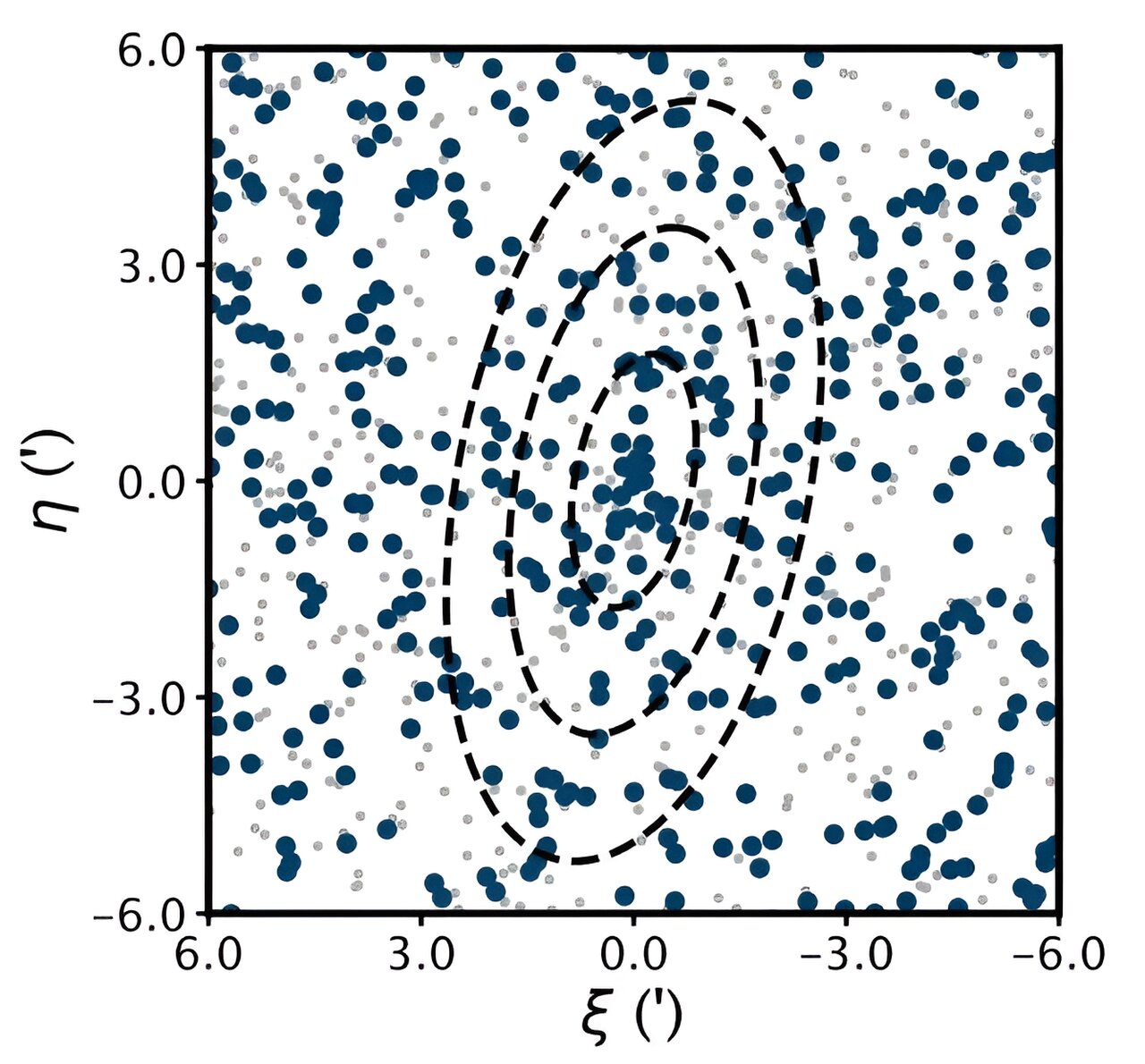By analyzing the images from the Ultraviolet Near Infrared Optical Northern Survey (UNIONS), an international team of astronomers has discovered a new compact satellite of the Milky Way, which received designation Ursa Major III/UNIONS 1. The newfound object turns out to be the least luminous known satellite of the Milky Way. The finding is reported in a paper published Nov. 16 on the pre-print server arXiv.
The Milky Way is known to be orbited by dozens of smaller, gravitationally-bound galaxies or star clusters. Although the list of identified satellites is relatively long, astronomers believe that some dwarf and faint galaxies are still undetected.
One of the astronomical surveys that is capable of finding such satellites is UNIONS, which observes the sky over 4,800 square degrees in the northern hemisphere. It is a collaboration between two Hawai’ian observatories: the Canada-France-Hawaii Telescope (CFHT) and the Panoramic Survey Telescope and Rapid Response System (Pan-STARRS). One of the survey’s main goals is to investigate the assembly and structure of the Milky Way.
A team of astronomers led by Simon E. T. Smith of the University of Victoria in Canada, has investigated the data from UNIONS as part of the search for new galaxies in the Local Group. As a result, they found the Milky Way’s satellite, not reported by previous studies.
“Ursa Major III/UNIONS 1 (UMa3/U1) was discovered during an ongoing search for faint Local Group systems in UNIONS,” the researchers wrote.
2023-11-28 03:41:04
Post from phys.org rnrn




















